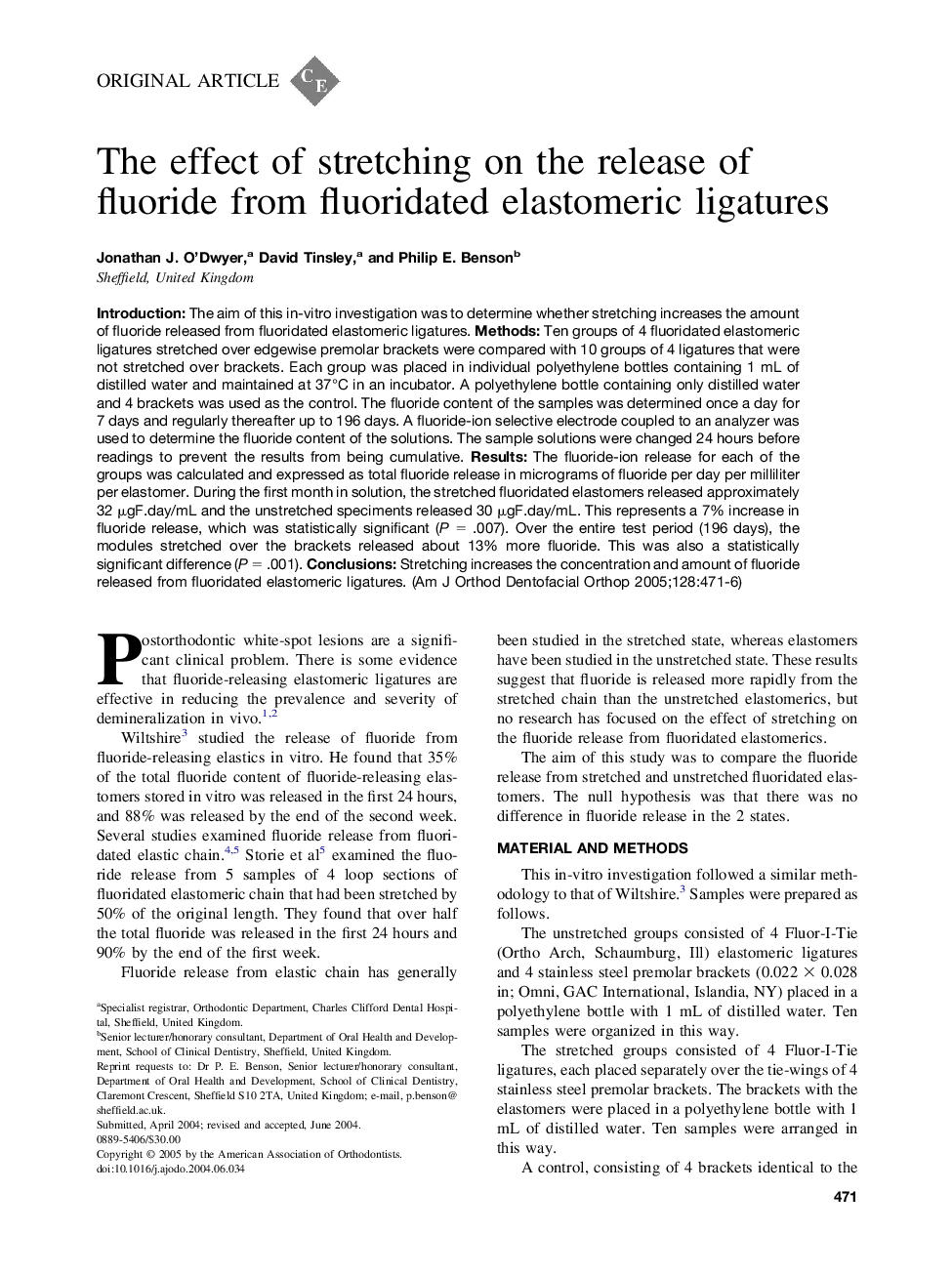| Article ID | Journal | Published Year | Pages | File Type |
|---|---|---|---|---|
| 9992600 | American Journal of Orthodontics and Dentofacial Orthopedics | 2005 | 6 Pages |
Abstract
Introduction: The aim of this in-vitro investigation was to determine whether stretching increases the amount of fluoride released from fluoridated elastomeric ligatures. Methods: Ten groups of 4 fluoridated elastomeric ligatures stretched over edgewise premolar brackets were compared with 10 groups of 4 ligatures that were not stretched over brackets. Each group was placed in individual polyethylene bottles containing 1 mL of distilled water and maintained at 37°C in an incubator. A polyethylene bottle containing only distilled water and 4 brackets was used as the control. The fluoride content of the samples was determined once a day for 7 days and regularly thereafter up to 196 days. A fluoride-ion selective electrode coupled to an analyzer was used to determine the fluoride content of the solutions. The sample solutions were changed 24 hours before readings to prevent the results from being cumulative. Results: The fluoride-ion release for each of the groups was calculated and expressed as total fluoride release in micrograms of fluoride per day per milliliter per elastomer. During the first month in solution, the stretched fluoridated elastomers released approximately 32 μgF.day/mL and the unstretched speciments released 30 μgF.day/mL. This represents a 7% increase in fluoride release, which was statistically significant (P = .007). Over the entire test period (196 days), the modules stretched over the brackets released about 13% more fluoride. This was also a statistically significant difference (P = .001). Conclusions: Stretching increases the concentration and amount of fluoride released from fluoridated elastomeric ligatures.
Related Topics
Health Sciences
Medicine and Dentistry
Dentistry, Oral Surgery and Medicine
Authors
Jonathan J. O'Dwyer, David Tinsley, Philip E. Benson,
